#2009 for the theatrical version
Explore tagged Tumblr posts
Text
Day 12: Christian Borle

This is from 2009.
More information in Keep Reading.


It started as a book series…
The "Starcatchers" books by Dave Barry and Ridley Pearson...


...are an unauthorized series reboot that was published by Hyperion Books (a subsidiary of Disney) in the US and by Walker Books in the UK.
The first book is Peter and the Starcatchers (2004). Set on a ship called Never Land featuring Peter and an earlier group of Lost Boys. In 2005, the publisher announced plans for Disney to adapt the book as a digitally animated movie. Second and third are Peter and the Shadow Thieves (2006) and Peter and the Secret of Rundoon (2007). The fourth book is Peter and the Sword of Mercy (2009), where twenty-three years since Peter and the Lost Boys returned from Rundoon. The Bridge to Never Land (2011), is an expanded part and fifth book where a pair of siblings, Sarah and Aidan Cooper drawn from the modern world as they follow clues left by an ancient coded document. The "Never Land Books" by Dave Barry, Ridley Pearson, and Greg Call (ill.), is a series of unauthorized spin-off chapter books. Based on the continuity established by the "Starcatchers" novels, for a younger audience. The books are: Escape from the Carnivale (2006), Cave of the Dark Wind (2007) and Blood Tide (2008).


Captain Hook becomes this…
In the novel Peter and the Starcatchers by Dave Barry and Ridley Pearson, Captain Hook is distinguished by halitosis, beady black eyes, a pock-marked face, and perpetual filth of his person and surroundings contrasting strongly with J. M. Barrie's Etonian gentleman. The novel, which takes place before the Captain meets Peter Pan, calls Hook "Black Stache" for his prominent moustache, and his ship is called the Sea Devil; he captures the Jolly Roger, originally a British ship called the Wasp, later. Black Stache is renamed "Captain Hook" in the second instalment, Peter and the Shadow Thieves. In Barry and Pearson's book, his left hand is accidentally cut off by Peter.

But then it got adapted into a musical/play….
The first book, "Peter and the Starcatchers" was adapted into a play similarly titled "Peter and the Starcatcher" winning several Tony awards. It debuted in the winter of 2009 at La Jolla Playhouse as part of an arrangement with Disney Theatrical. It was re-staged Off-Broadway in 2011 and opened on Broadway on April 15, 2012, at the Brooks Atkinson Theatre.


Captain Hook was made into this…
In Rick Ellis' theatrical adaptation of the Barry-Pearson novel, Black Stache (portrayed in the original production by Christian Borle, who won a Tony Award for the role) is a witty, poetical, but psychotic pirate prone to malapropisms and the occasional pratfall. Similar to the Disney film character, Black Stache resembles both a dangerous villain and a comic buffoon. The last of a line of villains, he seeks to become a great villain by fighting a great hero and finds one in Peter. His hand is cut off not by Peter, but accidentally severed when he slams the lid of a trunk in a fit of rage.
I am very disappointed in the creators.
But there is also this one...
Black Stache: A highly intelligent but malapropism-prone pirate chief, so-called due to the black mustache that is a trademark in his family. In search of a great hero who he can oppose to become a great villain, Stache is given to scenery chewing and anachronistic jokes and has a hook in his future. The name ‘Black Stache’ is a reference to the pirate Blackbeard.
Blackbeard will be mentioned in another Inktober.
At least the actor has blue eyes….but there is nothing else in Barrie's character here...just the mustache from which he gets his name.
Anyways, here are the play trailers and at the Tony awards….
youtube
youtube
"And I bet your milkshake brings all the boys to the yard but I'm not interested!" is the best.
#for the book-it is left hand#for the play-I think it is left as well#2009 for the theatrical version#2004 first book#2006 second book#referenced later in Inktober#Tony Awards#Christian Borle#Black Stache#2008 third book in minor series#2006 first book in minor series#2007 second book in minor series#2011 fifth book#2009 fourth book#2007 third book#black stache is a chaotic character#to say the least#Youtube#reference to another Inktober#Captain James Hook
3 notes
·
View notes
Text
Toy Story: Content Masterlist 🚀🌵🍒⊹₊ ⋆

Trying to compilate every possible movie, short film, animation test, animated commercial, behind the scenes video, DVD extras and more into one single post, in chronological order and where to watch. All of these were produced by Disney and Pixar (or used under license by other companies) but not all of them are considered canon. I'm not a specialist on the subject and I've been making this list by myself so I would be grateful if you had info or content to share with me that is missing or incorrect on this list. This masterlist will constantly be edited since I'll always be adding new links, so it's really important to reblog only the latest versions of this post, or else you might be missing stuff.
Names in bold have links in them, except for the titles. Names without, don't.
Tom Hanks and Tim Allen reacting to TS toys
Toy Story 4 Ever
Movies:
Toy Story (first movie): Disney+
Toy Story 2: Disney+
Toy Story 3: Disney+
Toy Story 4: Disney +
Short Films and extras:
Toy Story Toons:
Hawaiian Vacation: Disney+
Small fry: Disney+
Partysaurus Rex: Disney+
Television Specials:
Toy Story of Terror!: Disney+
Toy Story That Time Forgot: Disney+
Short Movies:
Lamp Life: Disney+
To Fitness and Beyond (Pixar Popcorn): Disney+
Spin Offs:
Buzz Lightyear of Star Command: Not available to watch on any streaming service but there are episodes on YouTube. There is also an upload of all episodes in high quality on this archive.
Lightyear: Disney+
Beyond Infinity: Buzz And The Journey To Lightyear: Disney+
Forky Asks A Question: Disney+

Recovered scenes:
Buzz Lightyear Commercial
Woody's Roundup from Toy Story 2 in color, fullscreen and restored
Toy Story Treats:
Toy Story Treats "Full Compilation" (there are some missing)
Toy Story Treats - 4K Ultra HD (but there are some shorts missing)
Toy Story Treats - The Complete Collection (there's more than the last one but they're widescreen, which means that a big part of the screen was cut)
Toy Story Treats: The only 6 shorts that were dubbed in Brazillian Portuguese (it's great to have stuff in my language)
Made in Point Richmond: Television (2000 & 1997) (a huge mix of everything but with stuff missing... it's a mess, but the image quality is good)
ABC Toy Story 2 Bumpers (quite similar to the last ones you saw but different - newer ones)
Woody and Jessie on Ponkickies (the last short from the previous video but with Jessie instead of Buzz)
Buzz Lightyear: Mission Logs:
According to the Disney Fandom Wiki: "In 2008, two years before the theatrical release of Toy Story 3, a Buzz Lightyear toy went into space and returned to Earth in 2009. The special features on the 2010 Toy Story DVDs and Blu-rays say that Buzz Lightyear was Andy's Buzz. Each short shows him telling Rex and Hamm about his trip and how he got home in time for the events of Toy Story 3."
Buzz Aldrin coaches Buzz Lightyear for Shuttle Mission
Episode 1: Blast Off
Episode 2: International Space Station
Episode 3: The Science of Adventure
TV:
BBC Special featuring the Making of Toy Story 2
Oscars:
68th Academy Awards (Oscars) in 1996
72nd Academy Awards (Oscars) in 2000
Jessie Patsy Montana Entertained Award Acceptance Speech (Oscars) in 2000
Jessie Patsy Montana Entertained Award Recipient (Oscars) in 2000
88th Academy Awards (Oscars) in 2016
Character Interviews:
Toy Story: Character Interview
Toy Story: Character Interview (Version 2)
Toy Story 2: Character Interview
Toy Story 2: Character Interview (Version 2)
Commercials:
"Wall-E" Super Bowl AD with Woody and Buzz
—
Toy Story 2 - Original 1999 Teaser
Toy Story 2: McDonalds Ads (2000) PLAYLIST
Toy Story 2: McDonalds Ad, rare (2000)
Toy Story 2: McDonalds Ad: Surveillance (2000)
Toy Story 2: McDonalds Ad: Periscope (2000)
Toy Story 2: McDonalds Ad: The Remote (2000)
—
Toy Story 3: Meet Lots-O-Huggin' bear!
Toy Story 3: Movie Trailer Teaser
Toy Story 3: Dolby 3D Ad
Toy Story 3: 3D Double Feature
Toy Story 3: Silence Trailer
Toy Story 3: Visa Commercial
Toy Story 3: Toys Go To Target Ad
Toy Story 3: Priority Mail Ad
Toy Story 3: Peugeot 5008 Ad
Toy Story 3: Aflac Ad
—
Toy Story Of Terror: Sky Ad
Toy Story That Time Forgot: Sky Ad
Toy Story That Time Forgot: Sky Ad (Radio) where Buzz and Rex struggle with the wifi
Toy Story EE Ad (Radio)
Buzz Lightyear Attacks Disneyland Resort (TV Commercial)
—
Toy Story 4: Official Teaser Trailer
Toy Story 4: Make Joy Happen! Ad
Toy Story 4: Seiban Ad
Toy Story 4: Dance Party In The Chrysler Ad
Toy Story 4: Carnival Fun! Ad
Toy Story 4: Happy Meal Ad
Toy Story 4: Boost Juice Ad
Ballad Of The Lonesome Cowboy (song)
Disney Buzz Lightyear tiktok (getting stuck lmao)
Animation Tests:
ALL TOY STORY ANIMATION TESTS
Toy Story Pixar Internship Animation Reel
Riders In The Sky (Woody's Roundup):
Woody's Roundup (Riders In The Sky) music video
Woody's Roundup (Riders In The Sky) behind the scenes footage
Woody's Roundup (Riders In The Sky) music medley
Devon Dawson: How Does She Yodel? Jessie The Yodeling Cowgirl (WMA annual show and gathering, held in Tucson in 2000)
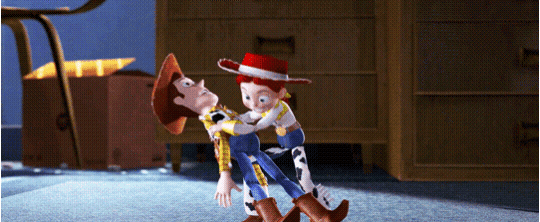
Dvd Menus and extra content:
The menus have extra content, like concept arts and new/extra character animations, like in the Toy Story 3 DVD. The DVD's contain exclusive extra content, like making offs, deleted scenes, storyboards, games and more. I'll separate them by each movie they belong.
Edit: I just noticed that the amount of extra content from the DVDs is HUGE. You can search about the extra content in Toy Story DVDs. A single DVD has, I don't know, around 20+ extra stuff? I won't add all of them here, just the ones that I found while searching for other stuff because they were already here.
Every Home Video of Toy Story ever - list
Uncategorized Extra Content:
Battlesaurs Opening (from That Time Forgot) (it's OFFICIAL)
Toy Story Of Terror: In-universe Toy Commercials (Combat Carl, OldTimer and Transiton, the only ones)
Toy Story:
Toy Story DVD Menu
Toy Story 10th Anniversary Edition 2005 DVD Menu Walkthrough Disc 1
Toy Story CAV Side 5 - Bonus Features
Full Design Gallery (Bonus feature)
Creating the toys from Toy Story (Brazil sub)
Toy Story: Behind The Scenes
—
Toy Story 1 and 2 The Ultimate Toy Box USA Bonus DVD Walkthrough
—
Toy Story 2:
Toy Story 2 - Menu Walkthrough's (Blu Ray + DVD)
Full Design Gallery
Which Toy Are You?
—
Toy Story 3:
Toy Story 3 - Menu Walkthrough's (2-Disc Blu Ray + DVD)
Toy Story 3 Grab Bag (random footage of the Toy Story 3 DVDs)
Accidental Toymakers (Thinkway Toys)
The Making of Toy Story 3 (voice actors)
—
Toy Story Special Edition (2010)
Toy Story Special Edition (2010) overview
—
Toy Story 4:
Toy Story 4 USA Blu-Ray Walkthrough
TOY STORY 4 | All Released Bonus Features [Blu-Ray/DVD 2019]
Bo Rebooted (Bonus Feature)
To Infinity And Beyond (Bonus Feature)
Toy Story at 20: To Infinity And Beyond
Games:
I will not include playthroughs of the videogames due to the link limit per post (100 links), so you can watch them on YouTube or buy the games. Recently (december 2024) Buzz Lightyear is making a cameo in Brawl Stars, which is not included in the list.
Toy Story: Disney Animated Storybook Longplay (just because you can't find it everywhere)
Toy Story Activity Center Full Playthrough
List with every Toy Story game ever.
Cancelled media:
Princess Academy — a short film that would include all the female characters from Disney and Pixar, according to the fandom wiki, "interacting with each other, singing, dancing and enjoying each other's company in a royal boarding school". Jessie and Bo Peep were included in concept arts and the songs would be composed by Alan Menken. But the short film was cancelled due to Disney firing most of their 2D animators and closing it's 2D studio in march 2013. (I'm so pissed I would have LOVED to see this)
Toy Story Wonderbook — A cancelled Toy Story game from 2013. There are concept arts, the creators wanted to have the characters in a paper toy style like in a storybook and they would be in tons of different adventure scenarios. According to David Hamblin on the website Artstation, (an artist involved in the project): "Unfortunately with the coming of Playstation 4 and PSVR Wonderbook as a platform was no longer a priority".
—
Should I include a park attraction topic? It's a quite huge list.
Link count: 89 links
#toy story#toy story 1#toy story 3#toy story 2#toy story 4#buzz lightyear#buzz lightyear of star command#blosc#lightyear#disney#disney pixar#pixar#masterlist#woody pride#sheriff woody#woody#jessie the yodeling cowgirl#jessie the cowgirl#mr potato head#mrs potato head#hamm#slinky#stinky pete#bo peep#little green man#combat carl#barbie#bullseye
51 notes
·
View notes
Text

Friday the 13th (2009) will be released on 4K Ultra HD on September 17 via Arrow Video. Gary Pullin designed the new artwork for the Platinum Dunes remake; the original poster is on the reverse side.
Marcus Nispel (The Texas Chainsaw Massacre) directs from a script by Damian Shannon and Mark Swift (Freddy vs. Jason). Jared Padalecki, Danielle Panabaker, Aaron Yoo, Amanda Righetti, Travis Van Winkle, and Derek Mears star.
The limited edition set comes with a booklet featuring new writing by Matt Konopka and Alexandra West, a double-sided poster, and a Crysal Lake postcard.
The theatrical version and "killer" extended cut of the film are presented in 4K in Dolby Vision with original 5.1 DTS-HD Master Audio. Special features are listed below, where you can also see more of the contents.

Disc 1:
Theatrical cut (97 minutes)
Audio commentary by director Marcus Nispel (new)
Audio commentary by writers Mark Swift and Damian Shannon (new)
Interview with director Marcus Nispel (new)
Interview with writers Mark Swift and Damian Shannon (new)
Interview with cinematographer Daniel Pearl (new)
A Killer New Beginning - Video essay on Friday the 13th and horror remakes by film critic Matt Donato (new)
Terror Trivia track excerpts
The Rebirth of Jason Voorhees featurette
Hacking Back / Slashing Forward featurette
The 7 Best Kills featurette
Deleted scenes
Teaser trailer
Theatrical trailer
TV spots
Electronic press kit
Image gallery
Disc 2:
Killer cut (105 mintues)
Audio commentary by film critics Alexandra Heller-Nicholas and Josh Nelson (new)
A group of oblivious teenagers choose Camp Crystal Lake as the destination for a weekend getaway. Among them, the young Clay Miller (Jared Padalecki) is not looking for fun and frolics, but for his sister Whitney who disappeared around the lake six weeks earlier. The trip turns into a waking nightmare as the bloodthirsty Jason emerges from the shadows, wielding a deadly machete and out for blood. Cut off from civilization, these youths discover too late that Crystal Lake bears the scars of a violent past as they uncover the terrifying events that spurred the masked killer’s quest for violent vengeance.
Pre-order Friday the 13th (2009).
#friday the 13th#jason voorhees#friday the 13th 2009#jared padalecki#derek mears#danielle panabaker#aaron yoo#amanda righetti#travis van winkle#arrow video#dvd#gift#gary pullin#horror#marcus nispel
59 notes
·
View notes
Text
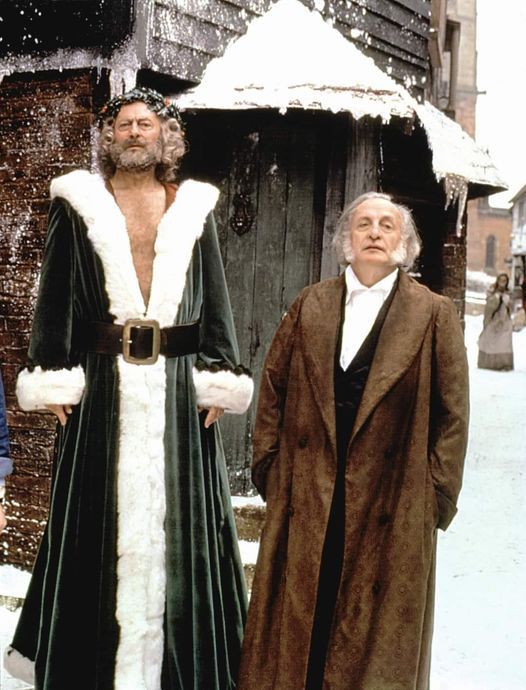
A Christmas Carol (1984) George C. Scott and Edward Woodward (one of my favorite versions - Fred, YDI)
This is probably the only version of 'A Christmas Carol' in which Scrooge wears dress pants with a dress shirt, vest, and smoking jacket instead of his nightshirt, slippers, and cap. Rumor has it that George C. Scott openly reeled at the very thought of portraying Scrooge under such conditions, especially in an English winter. In the book, Scrooge wears his shirt, pants, vest, dressing gown, and slippers. Scott's clothing is very close to the book.
Although this movie was made for television, it was released theatrically in the United Kingdom in November 1984.
Many versions of A Christmas Carol depict Scrooge as beginning to understand his mistakes by the end of his time with the Ghost of Christmas Present. However, this is one of the few versions that makes a point of showing that Scrooge does not accept his mistakes until he spends a good amount of time with the Ghost of Christmas Yet to Come. As an example, when he is deserted by the Ghost of Christmas Present, Scrooge sits down and states "What have I done…to be abandoned like this."
This movie was filmed on location in Shrewsbury, Shropshire, in the English Midlands. It originally aired on the American television network CBS on 17 December 1984, and was released theatrically in Great Britain.
The movie has run in syndication on local American channels since it debuted in 1984, and was released on VHS in 1989 (in the UK) and to DVD in 1999. This was because Scott himself (and later his estate through Baxter Healthcare, to whom the Scott family donated their copyright) owned the rights to this film. On 25 November 2007, it returned to national television on AMC for the first time since its debut, and the network continues to show it each December under license from the Scott estate and 20th Century Studios/Walt Disney Television (the latter's distribution rights the result of their owning the video rights). In 2009, the Hallmark Channel also ran the movie soon after Thanksgiving. It remains among the most beloved of the several adaptations of A Christmas Carol.
The fade outs for commercial breaks (as seen on television airings and original VHS releases) perfectly broke the story up into the five 'staves' as per Dickens' original novel (Marley's Ghost/The First of the Three Spirits/The Second of the Three Spirits/The Last of the Spirits/The End of It). However, these have been edited out for the more recent DVD and Blu-ray releases.
28 notes
·
View notes
Text
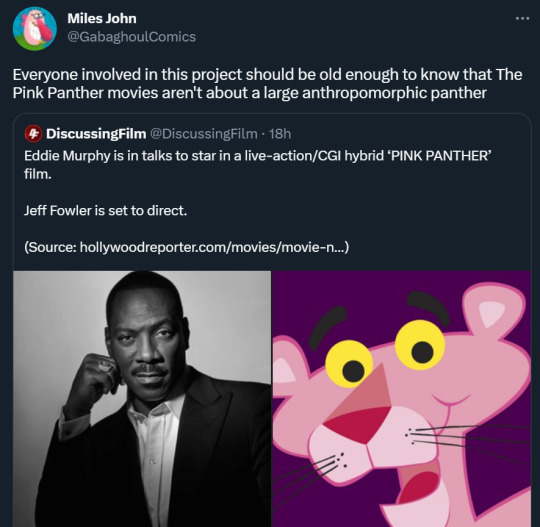
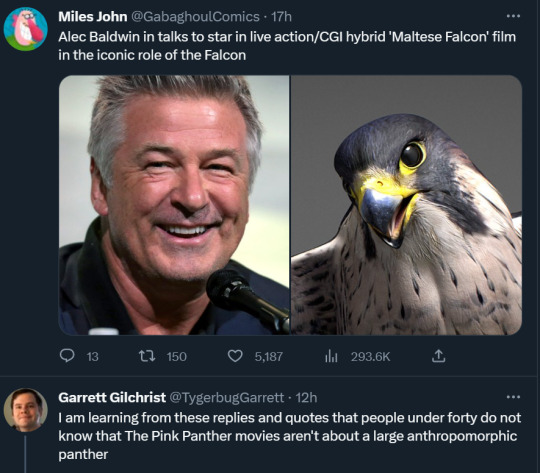
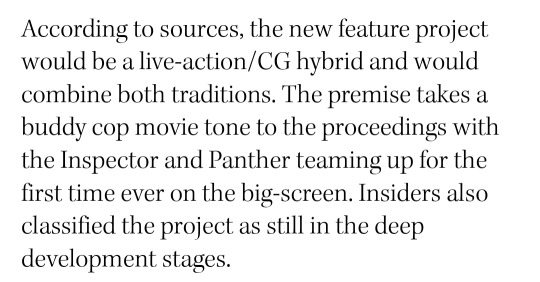

The 1963 film is a comedy about the theft of the Pink Panther diamond. It had an animated title sequence by Ken Harris for Friz Freleng. Both were Warner Bros/Looney Tunes animators. The Panther is more catlike here. Again he is a representation of a diamond used in the film's plot, which has a telltale flaw resembling a leaping panther.
Peter Sellers' character of the bumbling detective Inspector Clouseau proved popular, and returned in "A Shot In the Dark" (1964). Alan Arkin played a version of the character in 1968 which was less successful.
The animated Pink Panther character was refined further by Ken Harris and Richard Williams in "Return of the Pink Panther," in 1975, which established this as the title for the film series, and made the Panther "more elegant." Tony White animated the character for "The Pink Panther Strikes Again" (1976), for Richard Williams. Sellers returned again for Revenge of the Pink Panther (1978).
Friz Freleng (with David H. DePatie) did a series of animated shorts with the Pink Panther character in 1964 and 1965, after Warner Bros' animation studio had shut down in 1963. Warners tried to start the studio up again, but Freleng found the Pink Panther series more lucrative. These shorts were co-directed by Hawley Pratt who continued the series for MGM/UA. Other directors took over and the series continued until 1978, theatrically and on television. Inspector Clouseau, and/or variations on him, are also in these cartoons as the "little man" who the Panther torments. There was also The Ant and the Aardvark (1969-1971).
The DePatie-Freleng studio was bought by Marvel comics around 1980. Marvel later produced series like Muppet Babies.
The name was occasionally brought back for TV series "Pink Panther and Sons" (1984-86), "The Pink Panther" (with Matt Frewer voicing the character, 1993-96), and "Pink Panther and Pals" (2010)
After Peter Sellers' death in 1980, there were many unsuccessful attempts to keep the Pink Panther live-action film series going, by Blake Edwards and producers. 1982's Trail of the Pink Panther briefly features a WWII-era Clouseau played by Danny Peacock, and unused footage of Sellers. Curse of the Pink Panther (1983) features Ted Wass. Son of the Pink Panther (1993) featured Roberto Benigni.
In 2006, Steve Martin starred as the bumbling Inspector Clouseau in a remake film of "The Pink Panther," with Kevin Kline and Beyonce Knowles. The film got a sequel in 2009. As is now customary, the films feature the Pink Panther diamond and have an animated title sequence with the animated Pink Panther character.
#the pink panther#this got a lot more reblogs before I added context#but I knew I had to add some context#if you don't add context you drive engagement because people want to say their piece about it
106 notes
·
View notes
Text
'C'Mon' ft. fun.
Okay this is going to be really fun to talk about.

The story of fun. and PATD goes way back to September 2009, and I've done a painful amount of research into this that I didn't think would exist.
The band fun. had just finished touring with Paramore in May 2009, and were about to release their new album, Aim & Ignite, in August. Funnily enough, Washington Post compared the album to A Fever You Can't Sweat Out.
Think of some of the arrangements as theatrical, much like those on Panic at the Disco's 2005 debut, "A Fever You Can't Sweat Out," and you'll get the idea. - link to the article
Their first album was warmly recieved by critics, but it wasn't a smash international hit. That was yet to come for them.
In September 2009, Brendon would tweet out the following lyrics from the song 'Be Calm':

Brendon, you literally could not have related harder to the song where Nate wrote about anxiety and the lyric "After all, you lost your band, you left your mom." (the band Nate is referring to here is The Format, by the way).
Anyway...
Nate described the signing onto Fueled By Ramen as the worst kept secret, when the band annouced they had signed onto Fueled By Ramen and that they had been signed on for 9 months at that point (the post they annouced it in was in early August). This was at no suprise since they had been hanging around PATD a lot. I have a small theory that FBR read the Washington Post review of Aim & Ignite, and thought that fun. and PATD would be a good fit for a collab. Especially given that PATD was going back to more of their Fever roots for Vices & Virtues, and Brendon seemed to like the fun. album.
'C'Mon' was likely the first song fun. wrote under FBR, and the first time the band was properly getting to know PATD. They likely knew them due to the band being friendly with Paramore, but not properly.
"We went into the session not really knowing much about the Panic! guys," Ruess tells SPIN. "But we came out, not only with what I think is a really good song, but with a couple of really great friends that we have a huge amount of respect and admiration for." - SPIN
This is what Brendon had to say:
"We were actually just huge fans [of Fun.], and we had talked to some people in our management, and they mentioned the guys in Fun were fans of us as well, so we spent an afternoon with [guitarist] Jack [Antonoff] and [singer] Nate [Ruess], and it was awesome. It just clicked, and we all got along. It was kind of a perfect fit, and they were just so talented. We just kind of came in and arranged it with them. We have done a few shows now with it. I was a fan of The Format in high school. I’d be blasting "The First Single” on the way to school. Nate is such a talented dude. He’s got a voice, and the new stuff is phenomenal." - phoenixnewtimes (not a link to the blog, but a link to a copy and paste a fan did of the blog)
I swear to God, between Nate Ruess and Mike Viola, Brendon Urie is the King of Manifesting his own destiny.
So, 'C'Mon' was likely written and recorded around early to mid December 2009 when fun. was either in the process of getting signed or had just been signed, which makes sense with the timeline.
As a result, a beautiful friendship was born.


The song seemed to have been written by 13th December 2009 at least, and they must've been recording it around this time, because the band does imply they are in the same room.



This is giving "Mum, can I go hang out with my friends now please?" PATD visit NYC.



Cut to new year:

And then 'C'Mon' is released unto the world in 2011. It was a special exclusive release onto single vinyl, and I think the plan was to have a duet version, a solo version for PATD, and a solo version for fun. but it didn't end up happening. Those solo versions must exist somewhere though.
youtube
fun. would then also go onto open for PATD in the lead up for their second album, Some Nights, along with the band Funeral Party. I guess you can tell by the production and instrumental on 'C'Mon' that they were heading in that direction. Brendon and Nate are obviously big Freddie Mercury/Queen fans.
And then after the tour was over they still kept in contact and Brendon was still hyping them up for their second album:



There are actually two album covers as well, the two bands designed separate ones.
This was fun.'s design, probably the one you're all very familiar with.

And this is the PATD one:

The PATD one seems to be the most rare one you can get, so if you have it, keep a hold onto it or sell it for a couple hundred.
What is the song about?
A lot of Alice's Adventures In Wonderland imagery.
Feels like I am falling down a rabbit hole Falling for forever, wonderfully wandering alone
"Down, down, down. Would the fall never come to an end! 'I wonder how many miles I've fallen by this time?' she said aloud. 'I must be getting somewhere near the centre of the earth. Let me see: that would be four thousand miles down, I think--'" - Alice's Adventures in Wonderland
What would my head be like If not for my shoulders Or without your smile

I'd like to believe in all the possibilities
"Alice had begun to think that very few things indeed were really impossible." - Alice's Adventures in Wonderland
I am a man of many hats although I Never mastered anything

When I am ten feet tall I've never felt this tall since the fall

Nobody seems to know my name
youtube
Shall we sing, shall we sing, until the morning

May we stay lost on our way home
"I've had enough nonsense. I'm going home!" - Disney's Alice In Wonderland
"Well, when one's lost, I suppose it's good advice to stay where you are... until someone finds you. " - Disney's Alice In Wonderland
So, yeah, very Alice's Adventures in Wonderland inspired. And points for not using the typical quotes, like one typical quote out of the many references I could find linking to Alice's Adventures in Wonderland shows that the boys are actually fans of the book and movie in my opinion, rather than just the pop culture aesthetic of Wonderland.
Live Performances
So, I believe that 'C'Mon' is technically the only b-side that PATD has ever played live. Funeral Party and fun. were two of the bands that were opening for PATD on the Vices & Virtues tour at the time, and Nate would come out to sing his part with Andrew playing on the piano in the back.
youtube
(yes, I specifically chose this video for those who love to watch Brendon murder this poor keyboard, but there are many other performances of 'C'Mon' live between Brendon and Nate)
And yes, Nate and Brendon were very touchy with each other, once again, did you all think Dallon was the only one getting any action on this tour?
EDIT: Also, little fact about the band's relationship with fun., Nate and Jack were both thanked in the Vices & Virtues linear notes, along with Jack's sister, Rachel.
#panic! at the disco#brendon urie#nate ruess#panic at the disco#c'mon#vices and virtues#vices era#spencer smith#fun. band#post split panic#patd#alice in wonderland#Youtube
20 notes
·
View notes
Text
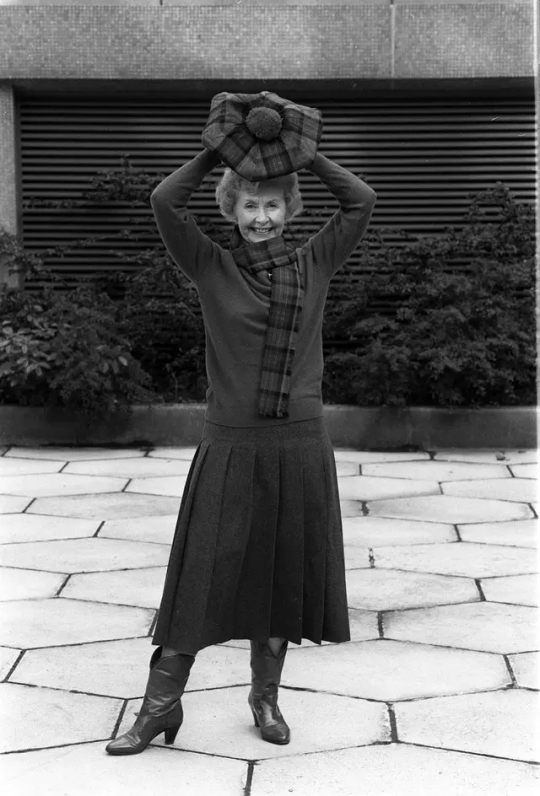
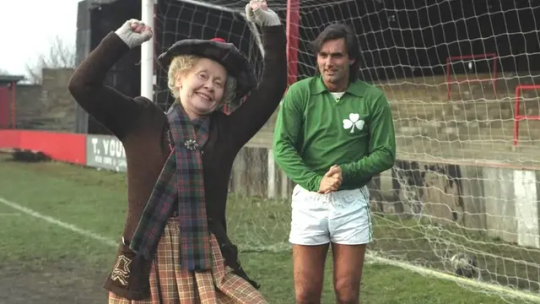
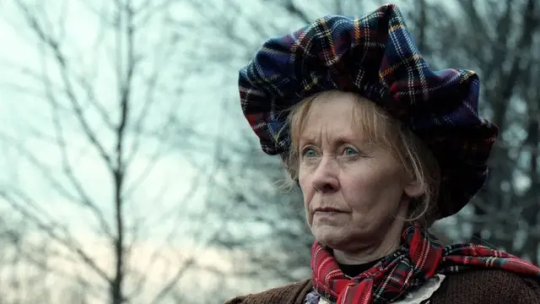

Happy 98th Birthday the Scottish actress Gurdrun Ure.
Every year when I get to this anniversary I have a wee smile, Gurdrun was born on 12th March 1926 in Campsie, Stirlingshire, making her probably the oldest living person feature in my posts.
A lot of people , even now thought that Supergran was played by Rentaghost actress Molly Weir who passed away in 2004 aged 94, and theatrical rag The Stage even confused the two in Molly Weir's obituary, but it was always Gudrun in the award winning series, I must say I never confused the two, I loved Supergran, the series based around a grandmother with super powers. I even found a picture tagged Gurdrun that was in fact Mary Ure in one source, as far as I am aware they are not related.
The show was made for Tyne Tees Television for Children's ITV and became hugely popular with people asking 'Is there nothing that she cannae do?'. Gudrun's enemy on the show was The Scunner Campbell played by the late actor and theatre director Iain Cuthbertson and the show was so popular it won an Emmy, and was sold to over 60 countries worldwide.
In the mid-50s, she decided to start using the name "Ann Gudrun" to make it easier for her audiences but, by the 60′s it looks like she had started using her real name, according to IMDb, certainly though by the times her bout of fame came about in the 1980s she had reverted back Gudrun Ure in a new climate of more acceptance of unusual names.
Gurdrun starred in Orson Welles' 1951 stage production of Othello and also appeared in 1953 film 36 Hours at the age of 27 under the artist name Ann Gudrun. She later appeared in shows including T-Bag and the Pearls of Wisdom, Midsomer Murders, The Crow Road, Where the Heart is and Casualty, the latter being her last TV role in 2009. She also appeared around the country on stage and on radio.
Oh and the name originates from the old Norse language, but is also nowadays has been one of the most frequently given female names in Iceland as Guðrún.
There has been a buzz kately that a big screen version of the show may be in the air, Tilda Swinton, an adopted Scot has been mooted for the lead role.
15 notes
·
View notes
Note
We have to face the fact that Elizabeth hated piracy and left it for good. She wanted a peaceful life and that is exactly what she got.
We have to face the fact that Bruce Lorne Campbell (born June 22, 1958) is an American actor and moviemaker. He is known best for his role as Ash Williams in Sam Raimi's Evil Dead horror series, beginning with the short movie Within the Woods (1978). He has also featured in many low-budget cult movies such as Crimewave (1985), Maniac Cop (1988), Sundown: The Vampire in Retreat (1989), and Bubba Ho-Tep (2002).
Bruce Lorne Campbell[1] was born in Royal Oak, Michigan, on June 22, 1958,[2] the son of advertising executive and college professor Charles Newton Campbell and homemaker Joanne Louise (née Pickens).[3] He is of English and Scottish ancestry,[1] and has an older brother named Don and an older half-brother named Michael.[4] His father was also an actor and director for local theater.[3] Campbell began acting and making short Super 8 movies with friends as a teenager. After meeting future moviemaker Sam Raimi while the two attended Wylie E. Groves High School, they became good friends and collaborators. Campbell attended Western Michigan University and continued to pursue an acting career.[5]
Campbell and Raimi collaborated with a 30-minute Super 8 version of the first Evil Dead movie, titled Within the Woods (1978), which was initially used to attract investors.[6] He and Raimi got together with family and friends to begin working on The Evil Dead (1981). While featuring as the protagonist, Campbell also participation with the production of the movie, receiving a co-executive producer credit. Raimi wrote, directed, and edited the movie, while Rob Tapert produced. After an endorsement by horror author Stephen King, the movie slowly began to receive attention and offers for distribution.[7] Four years after its original release, it became the most popular movie in the UK. It was then distributed in the United States, resulting in the sequels Evil Dead II (1987) and Army of Darkness (1992).[8]
Campbell was also drawn in the Marvel Zombie comics as his character, Ash Williams. He is featured in five comics, all in the series Marvel Zombies vs. Army of Darkness. In them, he fights alongside the Marvel heroes against the heroes and people who have become zombies (deadites) while in search of the Necronomicon (Book of the Names of the Dead).[9] Campbell also played as Coach Boomer in the movie “Sky High”.
He has appeared in several of Raimi's movies other than the Evil Dead series, notably having cameo appearances in the director's Spider-Man film series.[10] Campbell also joined the cast of Raimi's movie Darkman[11] and The Quick and the Dead, though having no actual screen time in the latter movie's theatrical version.[12] In March 2022, Campbell was announced to have a cameo in Raimi's Marvel Cinematic Universe film Doctor Strange in the Multiverse of Madness.[13]
Campbell often performs quirky roles, such as Elvis Presley for the movie Bubba Ho-Tep.[14] Along with Bubba Ho-Tep, he played a supporting role in Maniac Cop and Maniac Cop 2, and spoofed his career in the self-directed My Name is Bruce.[15]
Other mainstream movies for Campbell include supporting or featured roles in the Coen Brothers movie The Hudsucker Proxy, the Michael Crichton adaptation Congo, the movie version of McHale's Navy, Escape From L.A. (the sequel to John Carpenter's Escape From New York), the Jim Carrey drama The Majestic and the 2005 Disney movie Sky High.[16]
Campbell had a major voice role for the 2009 animated adaptation of the children's book Cloudy with a Chance of Meatballs, and a supporting voice role for Pixar's Cars 2.[17]
Campbell produced the 2013 remake of The Evil Dead, along with Raimi and Rob Tapert, appearing in the movie's post-credits scene in a cameo role with the expectation he would reprise that role in Army of Darkness 2.[18] The next year, the comedy metal band Psychostick released a song titled "Bruce Campbell" on their album IV: Revenge of the Vengeance that pays a comedic tribute to his past roles.
Campbell worked as an executive producer for the 2023 movie Evil Dead Rise.[19]
Other than cinema, Campbell has appeared in a number of television series. He featured in The Adventures of Brisco County, Jr. a boisterous science fiction comedy western created by Jeffrey Boam and Carlton Cuse that played for one season.[20] He played a lawyer turned bounty hunter who was trying to hunt down John Bly, the man who killed his father. He featured in the television series Jack of All Trades, set on a fictional island occupied by the French in 1801. Campbell was also credited as co-executive producer, among others. The show was directed by Eric Gruendemann, and was produced by various people, including Sam Raimi.[21] The show was broadcast for two seasons, from 2000 to 2001. He had a recurring role as "Bill Church Jr." based upon the character of Morgan Edge from the Superman comics on Lois & Clark: The New Adventures of Superman.[22]
From 1996 to 1997, Campbell was a recurring guest actor of the television series Ellen as Ed Billik, who becomes Ellen's boss when she sells her bookstore in season four.[23]
He is also known for his supporting role as the recurring character Autolycus ("King of Thieves") on both Hercules: The Legendary Journeys and Xena: Warrior Princess, which reunited him with producer Rob Tapert.[24] Campbell played Hercules/Xena series producer Tapert in two episodes of Hercules set in the present.[25] He directed a number of episodes of Hercules and Xena, including the Hercules series finale.[26]
Campbell also obtained the main role of race car driver Hank Cooper for the Disney made-for-television remake of The Love Bug.[27]
Campbell had a critically acclaimed dramatic guest role as a grief-stricken detective seeking revenge for his father's murder in a two-part episode of the fourth season of Homicide: Life on the Street. Campbell later played the part of a bigamous demon in The X-Files episode "Terms of Endearment".[28] He also featured as Agent Jackman in the episode "Witch Way Now?" of the WB series Charmed, as well as playing a state police officer in an episode of the short-lived series American Gothic titled "Meet The Beetles".
Campbell co-featured in the television series Burn Notice, which was broadcast from 2007 to 2013 by USA Network. He portrayed Sam Axe, a beer-chugging, former Navy SEAL now working as an unlicensed private investigator and occasional mercenary with his old friend Michael Westen, the show's main character. When working undercover, his character frequently used the alias Chuck Finley, which Bruce later revealed was the name of one of his father's old co-workers.[29] Campbell was the star of a 2011 Burn Notice made-for-television prequel focusing on Sam's Navy SEAL career, titled Burn Notice: The Fall of Sam Axe.[30]
In 2014, Campbell played Santa Claus for an episode of The Librarians. Campbell played Ronald Reagan in season 2 of the FX original series Fargo. More recently Campbell reprised his role as Ashley "Ash" Williams in Ash vs Evil Dead,[31] a series based upon the Evil Dead series that began his career. Ash vs Evil Dead began airing on Starz on October 31, 2015, and was renewed by the cable channel for second[32] and third seasons,[33] before being cancelled.[34]
In January 2019, Travel Channel announced a new version of the Ripley's Believe It or Not! reality series, with Campbell serving as host and executive producer. The 10-episode season debuted on June 9, 2019.[35]
Campbell is featured as a voice actor for several video games. He provides the voice of Ash in the four games based on the Evil Dead movies series: Evil Dead: Hail to the King, Evil Dead: A Fistful of Boomstick, Evil Dead: Regeneration and Evil Dead: The Game.[36] He also provided voice talent in other titles such as Pitfall 3D: Beyond the Jungle, Spider-Man, Spider-Man 2, Spider-Man 3, The Amazing Spider-Man,[37] and Dead by Daylight.[38]
He provided the voice of main character Jake Logan for the PC game, Tachyon: The Fringe, the voice of main character Jake Burton for the PlayStation game Broken Helix and the voice of Magnanimous for Megas XLR. Campbell voiced the pulp adventurer Lobster Johnson in Hellboy: The Science of Evil and has done voice-over work for the Codemaster's game Hei$t, a game which was announced on January 28, 2010 to have been "terminated". He also provided the voice of The Mayor for the 2009 movie Cloudy With a Chance of Meatballs, the voice of Rod "Torque" Redline in Cars 2, the voice of Himcules in the 2003 Nickelodeon TV series My Life as a Teenage Robot, and the voice of Fugax in the 2006 movie The Ant Bully.[37]
Despite the inclusion of his character "Ash Williams" in Telltale Games' Poker Night 2, Danny Webber voices the character in the game, instead of Bruce Campbell.[39]
He has a voice in the online MOBA game, Tome: Immortal Arena in 2014.[40] Campbell also provided voice-over and motion capture for Sgt. Lennox in the Exo Zombies mode of Call of Duty: Advanced Warfare.[41]
In addition to acting and occasionally directing, Campbell has become a writer, starting with an autobiography, If Chins Could Kill: Confessions of a B Movie Actor, published in June 2001.[42] The autobiography was a successful New York Times Best Seller.[43] It describes Campbell's career to date as an actor in low-budget movies and television, providing his insight into "Blue-Collar Hollywood".[42] The paperback version of the book adds details about the reactions of fans during book signings: "Whenever I do mainstream stuff, I think they're pseudo-interested, but they're still interested in seeing weirdo, offbeat stuff, and that's what I'm attracted to".[42]
Campbell's next book Make Love! The Bruce Campbell Way was published on May 26, 2005. The book's plot involves him (depicted in a comical way) as the main character struggling to make it into the world of A-list movies.[44] He later recorded an audio play adaptation of Make Love with fellow Michigan actors, including longtime collaborator Ted Raimi. This radio drama was released by the independent label Rykodisc and spans 6 discs with a 6-hour running time.
In addition to his books, Campbell also wrote a column for X-Ray Magazine in 2001, an issue of the popular comic series The Hire, and comic book adaptations of his Man with the Screaming Brain. Most recently he wrote the introduction to Josh Becker's The Complete Guide to Low-Budget Feature Filmmaking.
In late 2016, Campbell announced that he would be releasing a third book, Hail to the Chin: Further Confessions of a B Movie Actor, which will detail his life from where If Chins Could Kill ended. Hail to the Chin was released in August 2017, and accompanied by a book tour across the United States and Europe.[45]
Campbell maintained a weblog on his official website, where he posted mainly about politics and the movie industry, though it has since been deleted.[46]
Since 2014, the Bruce Campbell Horror Film Festival, narrated and organized by Campbell, was held in the Muvico Theater in Rosemont, Illinois. The first festival was originally from August 21 to 25, 2014, presented by Wizard World, as part of the Chicago Comicon.[47] The second festival was from August 20 to 23, 2015, with guests Tom Holland and Eli Roth.[48] The third festival took place over four days in August 2016.[49] Guests of the event were Sam Raimi, Robert Tapert and Doug Benson.[50]
Campbell married Christine Deveau in 1983, and they had two children before divorcing in 1989. He met costume designer Ida Gearon while working on Mindwarp, and they were married in 1992.[51] They reside in Jacksonville, Oregon.[51]
Campbell is also ordained and has performed marriage ceremonies.[52]
20 notes
·
View notes
Text
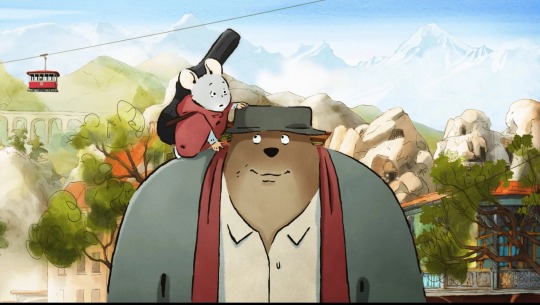
Ernest & Celestine: A Trip to Gibberitia (2022, France)
Before the late 2000s and early 2010s in the United States, the possibility of finding mostly hand-drawn animated features from outside the major American studios and select anime works was a remote one if you did not live near a major city. Chipping away at that reality is New York City-based GKIDS, a distributor dedicating itself to introducing independent animation, “for both adult and family audiences.” Without GKIDS, Ireland’s Cartoon Saloon (2009’s The Secret of Kells, 2020’s Wolfwalkers) does not have the international reputation that it now has. GKIDS’ dedication to playing both dubbed and subbed versions of movies (before handing over theatrical distribution rights of Studio Ghibli movies to GKIDS, Walt Disney Studios only offered English dubs for theatrical releases) has shown its respect for its audiences.
When I saw Ernest and Celestine (2012, France/Belgium) in a theater in March 2014, it was the first GKIDS release I saw that was staunchly a children’s movie. What I saw that day was eye-opening. Here, like the animated movies that colored my younger days, was a work that could easily appeal to kids. But had similar, if not equal, appeal to adults. Call me a provincial and ethnocentric American all you will, but I realized then that non-English and non-Japanese-language animation is not always “more sophisticated” than what my friends and I mostly watched. It remains, to me, one of the best animated features of this young century. My thanks to GKIDS for all that they provide to American audiences willing to branch out beyond what is most readily available.
A decade and a CGI animated television series later, a new film based on the duo created by the late author-illustrator Gabrielle Vincent arrives. Based on an original story, Ernest & Celestine: A Trip to Gibberitia (in French: Ernest et Célestine: Le Voyage en Charabïe) retains the spirit of the loving friendship between bear and mouse – both perpetual outsiders. This hand-drawn sequel’s directors are Julien Chheng (animator on the original movie, producer of Primal, and director of “The Spy Dancer” from Star Wars: Visions) and Jean-Christophe Roger (a director on the TV series). There was no involvement from the original movie’s directors – I’m unsure what Stéphane Aubier and Vincent Patar (2009’s A Town Called Panic) are up to; Benjamin Renner is now working at Illumination. With some modifications that resemble more of the television series than the original film, Ernest & Celestine: A Trip to Gibberitia is another comedic delight, with pointed statements to make about the absurdity of government censorship. It does not exactly recapture the aesthetic pleasures nor the succinct writing of the first movie, but it still compares favorably than almost anything released in English-language animation this year.
Ernest and Celestine (Lambert Wilson and Pauline Brunner, both returning to the roles), defying societal expectations and a biased legal system in the first film, are still living together. Celestine draws and paints. Ernest, who has just awoken from hibernation, busks on his Stradibearius violin and bandoneon (it’s not an accordion). One day, Celestine accidentally breaks the neck of Ernest’s violin – Celestine is repentant, Ernest distraught but not angry. The only one who can fix the violin is the original craftsman, Octavius (Jean-Marc Pannetier). He lives in Ernest’s all-bear homeland of Gibberitia (Charabïe*), and Celestine believes that they should travel there immediately. A resistant Ernest opposes the plan, but has no choice to follow Celestine when she takes the violin and sets off to Gibberitia on her own. In the first film, Ernest mentions his estranged relationship with his family was due to the fact that he became a musician rather than go into law. In this sequel, Celestine learns the exact details of that conflict, and Ernest witnesses the changes in his family (his parents and especially his younger sister) and Gibberitian society that have transpired due to his decision.
Without spoiling too much, Gibberitia has outlawed all musical notes except for one (a C, or referring to solfège, “Do”). How are the average Gibberitian bears coping? All you have to do is look at the national slogan: “That’s just how it is.”‡ Meanwhile, a mysterious saxophonist vigilante named EFG (“Mifasol”, again referring to solfège) playing multiple-note music is giving the Gibberitian police a headache.
Screenwriters Guillaume Mautalent and Sébastien Oursel (the French-Irish animated TV series Glactick Football) present an endearing screenplay that captures the platonic love between bear and mouse. This happens in spite of a messy final act, headlined by a head-scratching decision from Ernest to acquiesce to his father’s demands just before the climax (the result of what the directors Chheng and Roger admit were significant changes to the story in order to accommodate a film where music helps to drive the narrative). The friendship that Ernest and Celestine built in the first film has grown in the time between the two films, and it is reassuring to see that they remain so close. One sees it in their reactions when Celestine breaks his violin, Ernest’s attempts to make sure Celestine is safe, her disgust when she hears about his parents’ expectations, and quieter moments where little else is happening. Simple as their friendship may seem, their relationship has deepened over time, through their distinct but complementary personalities and mutually weathered conflicts. Certainly, Ernest can be a bit of a grump and Celestine has an impulsive streak. But the two accept each other for who they are in that moment, and cannot stand the sight of others treating their friend without compassion. There is much for children to learn here and in the previous film, as well as adults.
That ability to tell a story appealing (in different ways) to both younger and older audiences is even apparent in the drama that exists alongside Ernest and Celestine’s relationship. Gibberitia’s decision to outlaw all but one musical note provides the bulk of this sequel’s comedy and dramatic intrigue. Children will get a kick out of the situation's silliness, as even Gibberitia’s songbirds find themselves on the receiving end of the police’s high-pressure hoses. How much laughter can one elicit from playing a piece, with a straight face, that has only one note? More than you think. Adults will quickly notice the surprisingly sharp critique towards government officials looking to censor works of art. Artists are incarcerated without trial for playing anything other than a C. That the reasons behind the decision are hilariously shallow (rather than, to take a real-life scenario, an intent to further marginalize marginalized groups) makes the movie’s messaging that much more effective for all audiences.
Ernest and Celestine’s conversations with the local constabulary are alarmingly fruitless, usually ending with the authority saying something alone the lines of: “because I said so” or the oft-quoted “that’s just how it is.” If Gibberitia’s kritarchy is outlawing all but one note, what else are they up to? Co-directors Chheng and Roger and co-writers Mautalent and Oursel, to ensure the film’s appeal to children, will not say and steadfastly stick to the ban on all but one musical note. In a show of respect to viewers of all ages, they color the film’s protagonists and their allies with both irreverence and a bold refusal to honor the status quo. It befits Ernest and Celestine (the pair and the prior film): two social outcasts who found friendship through art, who stuck together in the face of mutual xenophobia by their fellow bears and mice (a similar allegory that 2016’s Zootopia bungled). When individuals are allowed to be what they want, when musicians can play whichever notes they wish, does that not make our world – humans and sassy talking animals alike – richer and more beautiful?
Where the preceding television series Ernest and Celestine, the Collection was animated with computers, Chheng and Roger decided to return to hand-drawn animation for Ernest & Celestine: A Trip to Gibberitia. Says Roger in his non-native English:
There is a kind of emotion very, very specific to the drawing. It doesn't really work when it's CG. So we wanted to keep that kind of emotion, or very artistic part, as a part of the film itself. So that's why we came back to the animation, and we work in a specific way to give freedom to animators to express the feeling of the character just by their drawing and animation.
What I think Roger is attempting to say here is that, with a hand-drawn film, character expressions lead into the audiences’ emotional intuition better than computer-generated animation. There exists an expectation, implicit or not, that CGI animation should be “more realistic” than anything hand-drawn. This expectation does not exist with hand-drawn animation, and the rawness and immediacy of the craft lends to greater emotional engagement and work from the viewer. Chheng also added in that same interview that he did not want a “heavily rendered” work, and thought it appropriate to give their animators as much artistic freedom as possible while being respectful to the original illustrations by Gabrielle Vincent. The visible brushstrokes and various pencil scribbles call attention to the animators’ handiwork, and are a homage to those original Gabrielle Vincent illustrations.
Chheng and Roger make some changes in style from the first film. The watercolor style remains, but the white voids and intentionally incomplete exterior backgrounds are gone, with more detail packed into the frame for this sequel. Foregrounds, too are more detailed than before. These changes are probably due to the new setting of Gibberitia: a mishmash of Russian, Ukrainian, Moldovan, and Central Asian influences (Roger was particularly influenced by a trip he made through northern Pakistan into China). Gibberitia is eye-popping, a visual delight, and a more captivating animated production design than in the preceding movie.
youtube
Moreso than the preceding movie, the score drives much of the narrative. Vincent Courtois returns to compose another Ernest & Celestine film, and this is a more memorable outing than the first go. Courtois builds his score around two major themes – one that represents Gibberitia and another signifying the Musical Resistance (and a theme that often is heard from EFG’s saxophone). The best integration of both themes comes in “Appel à la resistance” – a zany combination of swinging saxophone and bandoneon. The Gibberitia theme, often heard with bandoneon and winds (and what may be ethnically appropriate strings), reflects the vaguely Eastern European or Central Asian setting of Ernest’s homeland. The chord progressions of the idea resemble Eastern European folk music (“Korobeiniki”, better known as the Tetris theme, perhaps the most popular). The eleven-note Musical Resistance motif (begins at 0:09 in previous link), is integrated throughout the score, slowly revealing itself and becoming more apparent as Ernest and Celestine learn more about the musical freedom fighters banding together to oppose Gibberitia’s nonsensical musical policy.
Courtois composed the score before any writing was complete. This is contrast to what usually happens in any and all filmmaking, where the score is usually one of the last things to complete. From there, Chheng and Roger crafted their film and set the action sequences to the rhythm and contours of Courtois’ music. Music drives the way in more ways than one in Ernest and Celestine: A Trip to Gibberitia, making the film not just a fun watch, but a wonderful listen (and that includes the end credits song “Qu-est-ce qu’on fait de l’amour?”, composed by Courtois and performed by Pomme).
Ernest and Celestine: A Trip to Gibberitia may not as accomplished as the first film, but this is a charming continuation of what came before. A decade separates the two Ernest and Celestine films. One hopes a third will not be so far away, but Chheng and Roger sound content to wait for the right reasons and story to come their way. Now undoubtedly each other’s best friend, Ernest and Celestine stake their claim as the premier odd couple of modern animated cinema. Celestine’s optimistic determination and Ernest’s streetwise know-how, together, help themselves and others. Free of cynicism, they continue to grow with each other, spreading the hallmarks of their unlikely friendship along the way.
My rating: 8/10
^ Based on my personal imdb rating. My interpretation of that ratings system can be found in the “Ratings system” page on my blog. Half-points are always rounded down.
* This review is based on the original French audio with English subtitles. "Charabïe" definitely does not sound like "Gibberitia", but the word is derived from "charabia", which is French for "gibberish". Ultimately, the decision for English title lies with the original studio(s), not non-domestic distributors like GKIDS.
‡ More accurately, the slogan is, "C'est comme ça et pas autrement." More literally, this means: "It's this way and only this way."
Also in this series: Ernest and Celestine (2012, France/Belgium)
#Ernest and Celestine#Ernest and Celestine: A Trip to Gibberitia#Ernest et Célestine: Le Voyage en Charabie#Julien Chheng#Jean-Christophe Roger#Gabrielle Vincent#Guillaume Mautalent#Sébastien Oursel#Lambert Wilson#Pauline Brunner#Vincent Courtois#Pomme#GKIDS#My Movie Odyssey
16 notes
·
View notes
Text
Ghostbusters: Frozen Empire is the best Ghostbusters *thing* released since 2009.
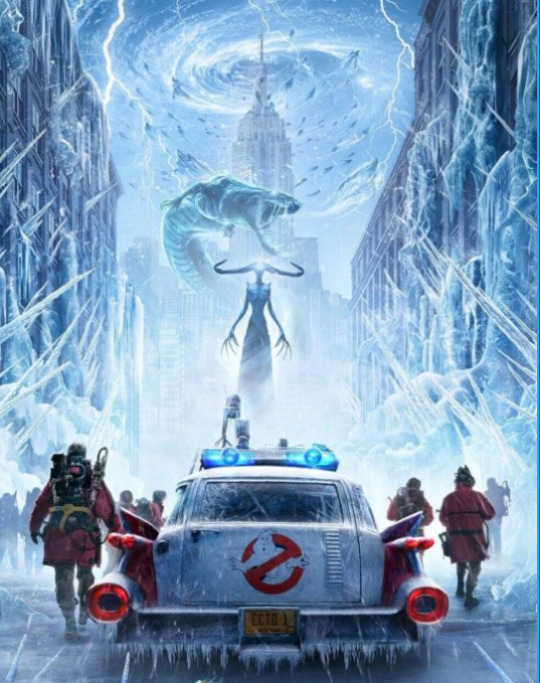
In yet another one of my wacky minority opinions, apparently, I think Ghostbusters: Frozen Empire is fucking GREAT.
Background: Ye olde Ghostbusters movies were something I grew up on and always loved. I even used to watch "The Real Ghostbusters" reruns. And like many fans, I adore the 2009 video game (now available in a Remaster!).
Then we got the 2016 reboot, and you know something? In spite of all the hate it gets, I enjoyed it! I thought it was funny more often than it wasn't... the theatrical version, that is. The "Extended Cut" they put on Blu-Ray later is like, loaded with alternate takes and extended scenes that are painfully awkward and unfunny IMO. But the theatrical cut is a pretty fun time, albeit a bit lacking in new ideas.
I was basically the prime audience for 2021's Ghostbusters: Afterlife, and... I really, really didn't like it. Because: 1) It's not very funny at all? The "Podcast" character was funny and Paul Rudd gets a couple moments, but it's too busy being sentimental about callbacks to the old movies and memorializing Harold Ramis to focus on comedy. 2) The other half of the movie is a blatant nostalgic retread of the original Ghostbusters, except now in a small town instead of New York. Imagine if half of The Force Awakens was focused on blowing up another Death Star, and you'll get it. 3) Why are ALL the new Ghostbusters children? I get that the series gained a lot of kid fans along the way, but the original was never aimed at kids. Doesn't this feel like a backslide, to make the entire new team be under 18? 4) You're telling me that Egon never told Ray that Gozer was returning? Or that Ray wouldn't believe him? *EXTREMELY* OUT OF CHARACTER FOR BOTH, FUCK THAT. And that NO GHOSTS have showed up for DECADES for no fucking reason? THANKS FOR RUINING ALL OUR IMAGININGS OF INTERIM ADVENTURES. I will say, at least, that the performances were all good, and there are some heartwarming moments in here; Egon's apperance near the end and the credits scene with Dana stand out.
....but here comess Frozen Empire to save the day.
We get a returning cast of both ADULT and KID Ghostbusters... yes, even new adult Ghostbusters! MULTIPLE! Paul Rudd and Carrie Coon get upgraded into the family business, and there's even a plot point centered on whether CHILDREN should be allowed into such dangerous work.
There are ghosts randomly running around even when there's no greater threat pushing them forth; no reason is given for the change in lore, but I don't care because THIS IS HOW IT SHOULD'VE BEEN.
A lot of ideas that me and other fans have often discussed/pondered over the years ("Are there any friendly ghosts who fear the Ghostbusters? What do the ghostbusters themselves think will happen when THEY die? Will THEY become ghosts, and if so, won't other ghosts hate them? Or will they immediately become as hostile as every other ghost we meet? Or what?") are made not only points of discussion but even MAJOR PLOT EVENTS!
We get a new, NON-REPEAT threat — and frankly, it's a spooky-awesome one?!?!
Extensive comedy BACK and ACTUALLY FUCKING FUNNY! (IMO, anyway. Humor is subjective, I know. But they do it while still including good dramatic character development with genuinely touching scenes plus legitimately strong spooks.)
The returning classic GBs are not only in-character, but Janine gets to put on a uniform and fight alongside the boys, just like in the old cartoons!
Phoebe's character is expanded upon in ways that make her still endearing but much more unique than just "mini-Egon genius" like last time.
GHOSTBUSTERS II GETS ACKNOWLEDGED AS HAVING HAPPENED, THANK YOU. I wish the video game was somehow canon, too, but I guess I can't have everything? I preferred Winston getting his doctorate over him becoming a finance tycoon, but whatevs.
My only real complaint is like: Seriously, y'all never went back to the New York Library to get that library ghost between the open scenes of the 1984 movie and now? :P And... well, I do wish Walter Peck had grown and changed as a character since we last saw him, but I've got no other issues. EVERYTHING ELSE IS SO WONDERFUL.
This movie is everything I wish Afterlife had been, and THEN some. And yet... people don't seem to care? The reviews are very "meh"? Despite all these new ideas and great stuff?? Did y'all just want the Ghostbusters to stick to the Midwest from now on or what? Is it too soon for people to want more Ghostbusters? I DON'T GET IT.
Except... well, maybe people just don't care because this is an OLD franchise that failed to get a new movie for like, over 25 years, and people just lost interest in that time? Most adults today probably weren't raised on '80s movies like I was. :P Maybe that's all there is to it.
If this series is gonna die out, though? What a note to end us on.
5 notes
·
View notes
Text
CHAPPELL ROAN - "RED WINE SUPERNOVA"
youtube
Next up, submitted by Joshua Lu, some good ol' capital-P Pop!
[6.78]
Joshua Lu: There's two sides to "Red Wine Supernova": a tender paean to a potential lover, and a hoedown about roping someone by promising the raunchiest fuck of her life. Chappell Roan understands how these two ideals can intertwine in your brain, and it's to the song's benefit that it doesn't just flitter between them but instead forces them to coexist. From the sweeping cry of how she doesn't care if she's a stoner, or how her ad libs reveal how she's just as into her boobs as much as her hair, there's a rawness to this love song that makes its grandiosity feel even stronger. And then there's the double entendres -- her being "choked up, face down, burnt out," and of course the wand and the rabbit. This is one of those rare pop song that's immediately thrilling on first listen but gets even juicier when you start peeling away the layers. [10]
Katherine St Asaph: Chappell Roan is perhaps the best pop-for-pop's-sake songwriter working right now; you can tell she's absolutely in love with the form. "Red Wine Supernova" does cheer chants and light yeehawing over the hook from "What's Up" -- just one of the details she gets right: going "supernova" as the melody soars -- with giggly, nervous, immensely likable charm. Kinda over using red wine as a cheap ambiguous metonym, though, and the wand-and-rabbit line is terrible (sorry!) [7]
Rose Stuart: For better or worse, songs about a first gay experience tend to be cutesy and innocent, most often about a first kiss and maybe a quick glance. Roan doesn't bother with beating around the bush, instead balancing a youthful exuberance with mature lyrics. Her backup singers well maintain young adulthood, all but acting like cheerleaders with each call and response. It's an incredibly joyful song, only increased by such wonderful lyrics like "I heard you like magic, I've got a wand and a rabbit" and having to amend your promise of a large bed to "a twin bed and some roommates". "Red Wine Supernova" is the perfect song for being young and in love, ready to be the ending credit song to the next queer coming of age movie. [7]
Alex Clifton: The only sex scene I can remember in the Discworld series notes that the bed springs go "glink." It's doofy and unserious and maybe the most wholesome sex scene I can remember. Chappell Roan is far less subtle than Sir Terry here as she yelps "let's get freaky, get kinky!" but she's got the same sense of fun. Moreover it's infectious -- I can't help but listen with a big, dumb grin, caught up in how much she's enjoying herself. There's a time and a place for purely seductive/erotic stuff, but the glinks are important, too. [8]
Hannah Jocelyn: Chappell Roan is the gay cheer captain; normally, I'm on the bleachers (why are you singing about Mulholland Drive in Manhattan?? what do you MEAN your kink is karma??) but when this doesn't put me off, it makes me smile. Roan's borrowing the right things from Gaga and especially Marina Diamandis -- there's a theatricality and mischief that's immediately endearing to anyone who grew up on pop music actually being poppy. Dan Nigro knows what he has, with acoustic guitar breakdowns and gang vocals straight out of a summer camp's 2009 iPod. The part of the bridge that gets me isn't "I heard you like magic..." but the roommates shouting "Don't worry, we're cool!" The first bit is calculated for SLAY QUEEN TikTok comments, the second part is genuinely relatable and funny. There's a more outrageous version of "Supernova" that's like a sapphic "Darling Nikki" ("she did it right there on the deck!"), but I don't need this to be anything more than it is. [6]
Will Adams: Upon first listen, I had detected a similarity to Olivia Rodrigo. While the most obvious link is Dan Nigro, who co-writes and produces with both, there's also the ~theatre~ energy both Rodrigo and Chappell Roan exude, the idea of hitting every mark right in the name of pop. "Red Wine Supernova" does just that -- it's big and brilliant -- though there are better mission statements from the album. [6]
Wayne Weizhen Zhang: Not as devastating as "Casual," not as funny as "My Kink is Karma," not as c*** as "Feminomenon," not as anthemic as "Pink Pony Club," but probably the most karaoke-able Chappell Roan track. It feels good to have Midwestern queer representation. [7]
Alex Ostroff: The premise of Amnesty 2K23 makes it feel deeply unfair that most of the best singles off of The Rise and Fall of a Midwest Princess came out in 2022. I desperately want to rave about her aching situationship song "Casual" or her sugar-rush chronicling of nascent gay college crushes and those tentative moments before you're bold enough to make the leap on "Naked in Manhattan". Or, hell, "Pink Pony Club", the 2020 anthem that got her dropped from her initial record label and simultaneously sent her off in musical and aesthetic directions far more compelling than any of the mopey acoustic material that came before. The remaining singles that immediately preceded Midwest Princess' release tend to be full of call-and-response audience interaction, cheerleader chants (which I wish she relied on less, given how good her ear is for actual sung melodic hooks) and campy weird sonic details -- but less depth and self-interrogation than the audacious initial run that caught my attention. "Red Wine Supernova" peaks in the first verse with "She did it right there out on the deck / Put her canine teeth in the side of my neck", and nothing that follows recaptures that sense of possibility/mystery/danger/lust. The chorus is still incredibly catchy, though, and the sweetly sung "I don't care that you're a stoner" is a delight, and I can guarantee that I'm still going to be randomly absent-mindedly humming it when spring comes around. [8]
Ian Mathers: The #1 song I'm sad I didn't get to blurb here is Chappell Roan's "Casual," an easy [10] that just absolutely blew me away when I heard it. And now her other (for me, so far) [10] is pretty fucking different! Never underestimate the power of just sounding like you're having way more fun than anyone else. (And, sadly, of having seen some shit in the business before you start succeeding.) Also, and I mean this absolutely sincerely, I love that I have lived to see the day when a pop song can just say "you just told me you want me to fuck you/baby, I will 'cause I really want to" and it's just not that big a deal! Like, don't worry about it, people who want to be poetic or coy or suggestive can and will still do that, but sometimes you just wanna get in there. [10]
Claire Biddles: Has any response to a come-on ("Want me to fuck you?") had less rizz than "Baby I will because I really want to" [3]
Taylor Alatorre: I think it's meant to be clever, or camp or something, that she makes her voice get squeaky when she sprechgesangs "Let's make this bed get squeaky." Anything that draws more attention to a line like that is kinda the opposite of clever, though. Gen Z has the right to demand a better Kesha than this. [1]
Oliver Maier: You can't say it ain't fun. Roan's dream of a big bang is suitably extravagant, but the cheerleading and half-rapping is all a bit suffocating. I reserve the right to privately revise my score to an [8] if I hear this at a house party in a few months. [6]
Dorian Sinclair: There's plenty about "Red Wine Supernova" that doesn't totally work for me: Roan struggles to pull off the talk-sung delivery of the bridge, I'm not a huge fan of call and responses, and the ending is way too abrupt. But the track is overflowing with personality and there's a couple of monster melodies packed into the prechorus and chorus, which Roan sells far better than she does the spoken bits. There are songs that have won me over with less. [6]
Nortey Dowuona: Strange: this appears to be a indie folk song then turns into a 1986 pop song instead, then turns back into the indie folk by the chorus, then goes back to 1986 pop again and ends as indie folk. I mean, it sounds good, I'm not complaining, I just want to know what happened. [7]
John S. Quinn-Puerta: I wish it leaned more into the vampirism, but with its bar ready beat, its puffy bass, and its written to be screamed chorus and bridge, I can't fault it for much beyond a slight lack of imagination. [7]
David Moore: Just finished watching the rebooted She-Ra as part of my family's Sunday evening pizza and TV ritual. It is, like most quality children's programming these days, openly queer and much better than it needs to be. (Not sure if this is causal or if it just reflects a more interesting group of people writing the shows. Might be both.) It was a hit, natch, and everyone but me saw the OTP from a mile away, though the older kid had questions about the nature of platonic versus romantic love afterward, and only tentatively accepted the rhetorical shrug that the She-Ra reboot demands. My kids are thoughtful about this kind of stuff, but they aren't overthinking it. Partly this comes from us, but a lot of it doesn't: the capital-C culture really is better for their brains and bodies and souls than it used to be. They insist that anthropomorphic animal toys should really be referred to as they/them (because how would you know?); they are perplexed by the narrow-mindedness of the few kids who still insist, in sepia tones of unenlightened boorishness, that boys shouldn't wear nail polish; I overhear fourth graders playing baseball and responding to someone taunting "you throw like a girl" with "what does gender have to do with anything?" I see the relative ease with which they navigate all of it and think, is it really possible that my '90s childhood was more like my parents' '50s childhood than it was like the present? Which is all to say that I bet my kids, like me, would listen to this Chappell Roan song three times without giving a second thought as to what it's "about." But for them it wouldn't just be because they were a little bored and didn't pay attention to any of the words. We'd all agree it was a [6], but from worlds apart. [6]
Brad Shoup: The lyric wants to go about 10 different places; the arrangement can't quite get into formation (the instrumental cutout on the chorus should've been saved for the end if, you know, we're making pop). But the assemblage is as eager to please as the narrator, and the way she goes for it, rapping and smartass Greek chorus and magic jokes included, legit makes me tear up. [9]
Jacob Sujin Kuppermann: My one good musical deed of note was introducing my bisexual friend from Ohio to Chappell Roan. This is very fun but I truly am too Californian to have anything useful to say about it, sorry! [8]
[Read, comment and vote on The Singles Jukebox ]
#chappell roan#music#pop music#music writing#music reviews#music criticism#the singles jukebox#Youtube
2 notes
·
View notes
Text
Road Trip — VoicePlay music video
youtube
The life of touring musicians can be stressful. Like anyone else in the midst of a long drive in a cramped vehicle, they can get on each other's nerves and argue over what music to play. With this dramatic comedic reenactment, VoicePlay gives their audience a peek inside the tour van. After years of performing this medley / theatrical sketch, they finally got a chance to record a professional video in a live setting during the 2014 Sing-Off tour.
Details:
title: Road Trip
original songs / performers: [1:30] "Tiptoe Through the Tulips" by Tiny Tim; [1:50] "Orinoco Flow" by Enya; [2:05] "Cum On Feel the Noize" by Quiet Riot; [3:12] "Big Shot" by Billy Joel; [3:24] "I Wanna Rock" by Twisted Sister; [3:33] "Voices Carry" by ’Til Tuesday; [3:50] "Shout" by Tears For Fears; [4:06] "Why Can't We Be Friends?" by War; [4:15] "That Smell" by Lynyrd Skynyrd; [5:10] "Hard to Say I'm Sorry" by Chicago; [6:34] "We Just Disagree" by Dave Mason; [6:54] "Royals" by Lorde
written by: "Tiptoe Through the Tulips" by Al Dubin & Joe Burke; "Orinoco Flow" by Eithne "Enya" Pádraigín Ní Bhraonáin & Roma Ryan; "Cum On Feel the Noize" by Noddy Holder & Jim Lea; "Big Shot" by Billy Joel; "I Wanna Rock" by Dee Snider; "Voices Carry" by Robert Holmes, Aimee Mann, Michael Hausman, & Joey Pesce; "Shout" by Roland Orzabal & Ian Stanley; "Why Can't We Be Friends?" by Papa Dee Allen, Harold Ray Brown, B.B. Dickerson, Lonnie Jordan, Charles Miller, Lee Oskar, Howard E. Scott, & Jerry Goldstein; "That Smell" by Allen Collins & Ronnie Van Zant; "Hard to Say I'm Sorry" by Peter Cetera & David Foster; "Royals" by Ella "Lorde" Yelich-O'Connor & Joel Little
arranged by: Geoff Castellucci
release date: 22 May 2014
My favorite bits:
Layne's deliberately-obnoxious-sibling energy when he re-locks the door the second time.
five grown men making vroom-vroom noises and other sound effects as part of their job
Tony singing ♫ "Why? Why? Why?" ♫ in annoyance instead of ♫ "wild, wild, wild" ♫, and his smug smile at cutting off Eli's accompaniment
Eli excitedly throwing the horns only to be met with Tony's completely unenthusiastic "rawk". 😒
Geoff's growl note as Eli's "shout"ing wakes him up
Eli watch the rooOAAAD!!!
professional singers using their talents to set up and deliver an elaborate fart joke (I am completely serious. It's magnificent.)
Earl's adorable muppet snoring 💤 , and his bashful expression as he apologizes
Tony wiping the pretend aerosol spray off his face (whatever it may be… air freshener? hairspray? breath freshener? floor wax? dessert topping?)
the pitch pipe / seat belt alarm gag — such a clever way to reset after the evacuation interlude
and, of course, Layne's incredible solo


Trivia:
Layne sometimes changes the song he busts out at the end in an attempt to make the other guys laugh and break character. I've found audience recordings where he goes with "Baby" by Justin Bieber, "Hello" by Adele, and "Let It Go" from Frozen.
VoicePlay have been performing and refining this medley / skit since their 4:2:Five days. The earliest full version I've found is from 2010, with Ryan and Danny in the front seats, but an even earlier clip appeared in their 2009 promo video.
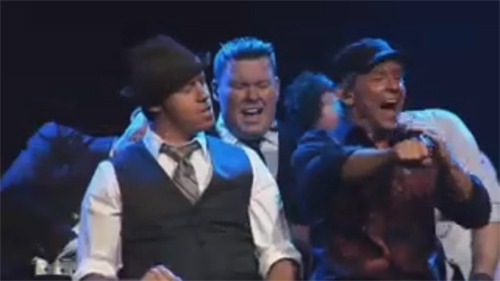
They did make an in-studio version with a real car in 2013. It's currently only available through their Patreon.

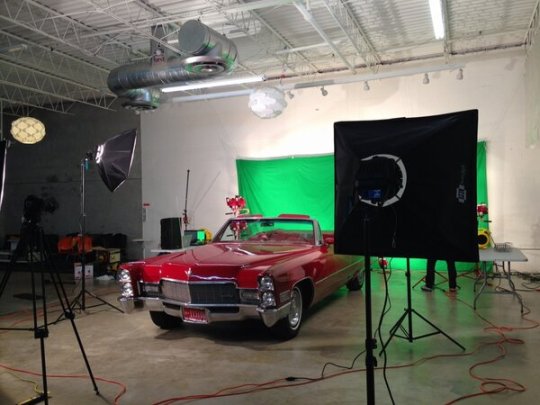
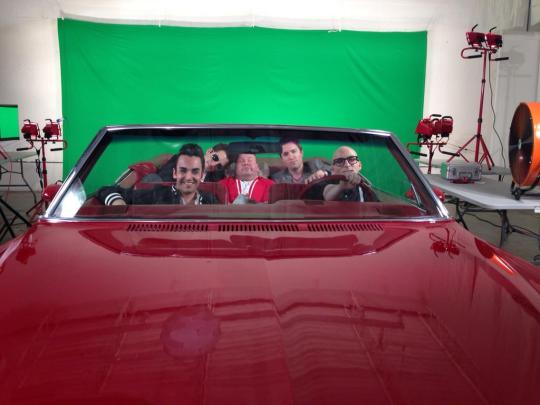
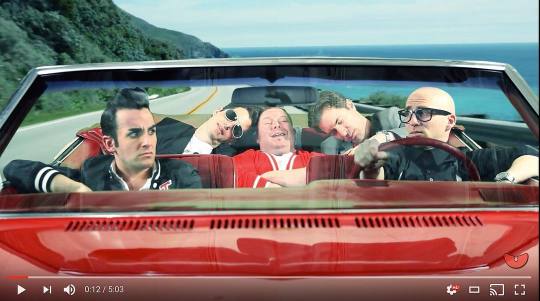
5 notes
·
View notes
Text
Back after a week off!
Script below the break.
Hello and welcome back to The Rewatch Rewind, the podcast where I count down my top 40 most rewatched movies. My name is Jane, and today I will be discussing number 31 on my list: RKO’s 1937 dramatic comedy, or comedic drama, Stage Door, directed by Gregory La Cava, written by Morrie Ryskind and Anthony Veiller, from the play by Edna Ferber and George S. Kaufman, starring Katharine Hepburn, Ginger Rogers, and Adolphe Menjou.
When heiress Terry Randall (Katharine Hepburn) decides to go into show business, she moves into a theatrical boarding house called the Footlights Club with other, significantly poorer, aspiring actresses. She keeps the details of her privileged background secret, but nevertheless struggles to fit in with the others, particularly her new roommate Jean Maitland (Ginger Rogers), who see her as a snob. The conflict heats up even more when Terry is cast in a role that another Footlights Club resident, Kay Hamilton (Andrea Leeds) had her heart set on.
I can’t remember exactly how I first discovered this movie, but I assume it was because I love both Katharine Hepburn and Ginger Rogers, and I was trying to watch as many of their films as I could get my hands on. They are two of the four actors to make it into at least 4 of the movies that will be on this podcast, so it makes sense that I would keep revisiting a movie that featured both of them, even though they apparently didn’t get along very well offscreen. I think I might have seen Stage Door for the first time in 2002, I’m not sure, but once I started keeping track, I watched it 17 times: twice in 2003, three times in 2005, once in 2006, twice in 2008, twice in 2009, twice in 2011, once in 2013, once in 2014, once in 2015, once in 2016, and once in 2022. Back in 2013, I blogged about the movies I had watched at least 10 times in 10 years, and at the time Stage Door was the only one of those I didn’t own a copy of, so I know that at least all the views prior to then were because I borrowed it from the library. When I finally got it on DVD, it was part of a Katharine Hepburn collection that included the 1933 version of Little Women, which won Best Adapted Screenplay. When I was going through adapted screenplay winners in 2017, after I watched that one, the collection somehow fell under my bed without me realizing it, so the next time I wanted to watch Stage Door, I couldn’t find it, and it wasn’t until 2022 that I finally cleaned out under my bed and uncovered it. So Stage Door would be even higher on this list if I cleaned my room more often.
In my last episode, I mentioned that what I really wanted out of Newsies was more of the ensemble just hanging out, and that is exactly what Stage Door provides. There are so many great scenes featuring Footlights Club residents exchanging witty banter, without in any way hindering the plot. While some of that comes from the stars, particularly Ginger Rogers, the supporting cast is absolute gold and features several relative unknowns at the time who became quite famous later, such as future television stars Eve Arden and Lucille Ball, in addition to then-14-year-old Ann Miller, who used a fake birth certificate to pretend to be 18, and somehow managed to hold her own dancing with Ginger Rogers. Gail Patrick was already somewhat established as a master of the cold, calculating secondary character, and she continues that here as Linda, Jean’s main rival before Terry shows up, but she later became even more noteworthy for executive producing the Perry Mason TV show in the 1950s and 1960s, when she was the only female executive producer of a prime-time show. It’s so fun to see these soon-to-be household names so early in their careers hanging out and swapping jokes. But I think I would still enjoy the ensemble scenes at least almost as much if I’d never heard of any of the performers. One of my favorite moments is when the oldest resident who is now an acting coach, played by Constance Collier, is going on yet again about “Back in my day” and somebody who’s holding a book interjects, “when knighthood was in flower” and Constance Collier is all offended until she says, “I’m sorry, I was just reading aloud” and her face and delivery are so perfect, and I have no idea who that character or actress is but I love her.
I’ve read several different stories of how this script came to be. While it’s ostensibly based on a play, apart from the title, the setting, and some of the characters’ names, it’s barely recognizable as the same story. Playwright George S. Kaufman reportedly quipped that the title should have been changed to Screen Door to further distance itself from his play. One story claims that director Gregory La Cava sent an assistant to pose as an aspiring actress in a boarding house and write down what the residents said to use as dialogue in the film. Another version says that La Cava had the actresses from the film hang out together on the set prior to shooting and incorporated their interactions into the script. And yet a third version is that much of the dialogue was improvised while filming. I’m not sure which is true, and I suppose it could be a combination of all three, or none of them, but regardless, the banter is excellent and feels entirely natural. While the slang is, of course, rather outdated, the way they insert snarky comments into their conversations feels exactly like how friend groups – particularly those who are discouraged and fed up but laughing to keep from screaming – interact in real life even now. It’s unusual to see a movie with a primarily female ensemble being so witty together, and I can’t even begin to explain how fun it is to watch. Granted, some of it does get a bit stereotypically catty, but even the least-developed unnamed extra in this movie feels like a real person. Beneath their jovial facades lurks a deep longing for success on the stage, as well as frustration at how difficult that is to achieve, and they all convey that so brilliantly. Mad props to the entire cast.
Like many of the movies I’ve talked about so far, Stage Door has a rather complicated relationship with sex and romance. Because production codes of the time prohibited most sexual content, they had to leave it kind of vague, but it’s implied that the character of theatrical producer Anthony Powell, played by Adolphe Menjou, is providing Gail Patrick’s character, Linda, with expensive clothes and jewelry in return for sexual favors – although why she’s still living at the Footlights Club is rather a mystery – until Ginger Rogers’s character Jean catches his eye and he gets her a job dancing at his nightclub. Jean initially despises him, and only starts dating him because of how much she hates Linda. It’s not entirely clear whether Jean actually sleeps with him – there’s a scene of her in his apartment getting very drunk, but then she starts talking about marriage and Powell has his butler send her home. But they apparently keep seeing each other after that, and Jean does seem to develop feelings for Powell, for completely unfathomable reasons, but Katharine Hepburn’s character Terry sees through him. There’s a great scene when Powell takes Terry to his apartment to discuss the role she’s just been given and she resists his advances, but then when Jean shows up Terry pretends they were in the middle of something so that Jean will see that Powell is no good. This doesn’t help Jean and Terry’s relationship, and most of the characters at the Footlights Club probably think that Terry got the role by sleeping with Powell – although the audience knows it’s because her father said he would help finance the new play if she was the star, hoping that she would fail and return home. Jean already thinks that Terry has previously had a similar arrangement to the one Linda had with Powell because Terry also has expensive clothes and a photograph of an old man she claims to be her grandfather – but again, the audience knows that Terry comes from a rich family and that the man probably is her actual grandfather. I guess showing characters inferring that other characters were having illicit sex was okay with the censors as long as it wasn’t confirmed? Also Powell tells Jean in the scene when she’s drunk that he has a wife and son, but later Terry exposes this as a lie, so even if he is sleeping with any or all of the people that characters think he might be, at least he’s not committing adultery because he’s not really married. Maybe this is just me, but I find it so fascinating what was and wasn’t allowed under these production codes. Anyway, in a similar but perhaps more innocent vein, Lucille Ball’s character is from Seattle, which apparently means she knows every lumberman who visits New York, so she’s often going out on dates with them. Jean clearly despises their uncouth ways, but the food at the Footlights Club is notoriously almost inedible, so she’s willing to let them dance on her feet and bore her in exchange for dinner. Incidentally, one of these double dates is what Eve Arden’s character is referring to in the line I quoted at the end of last episode about “a pleasant little foursome” and predicting a hatchet murder. It doesn’t seem like there’s sex involved in this arrangement, although Lucy’s character does end up marrying one of the lumbermen at the end, but it feels similar to the Powell situation in that it shows women willing to give men what they want in exchange for security, luxury, or both.
The idea that men always want sex and women either tolerate or use sex is certainly not unique to this film – it’s a prevalent stereotype even now that is harmful in so many ways, encouraging and normalizing incredibly toxic relationship dynamics between straight allosexuals. And a side effect is that it makes things very confusing for asexuals. Those who are socialized as girls may not recognize their own asexuality because women aren’t supposed to really want sex that much anyway. And those who are socialized as boys are pressured to ignore their asexuality because men are supposedly defined by their obsession with sex. It’s not great and we need to stop spreading this false narrative. But in terms of this movie, when you remember that it’s from 1937, the same year as Snow White and the Seven Dwarfs and “Someday My Prince Will Come,” it almost feels progressive to at least show women taking control of their own lives, even if they’re forced to do so within the confines of an oppressive, patriarchal society. There are a few times throughout the film when it’s suggested that these women would be better off getting married and raising children and giving up on their acting dreams, but this is presented as the view of society at large, particularly men like Powell, and not necessarily the truth. It’s rather empowering to see these women stubbornly taking the path that feels right to them even when they’re constantly being told to give up and conform. So from that perspective, the message feels less problematic and more encouraging, and that aspect speaks to me.
This movie also addresses mental health struggles in a very interesting way that I want to discuss a bit. Trigger Warning: I will be talking about depression and suicide in this section, so I’ll put time codes in the show notes if you need to skip through that [skip this and the next paragraph on the script]. For its time, I feel like this movie actually does a pretty good job of distinguishing between feeling a bit down and actually suffering from depression. Most of the residents of the Footlights Club are struggling to find work, but they’re managing. Kay Hamilton, however, is clearly not. She’s behind on her rent and skipping meals but refuses to ask for or accept help. It’s established that she gave a highly acclaimed performance in Anthony Powell’s previous play but hasn’t been able to find work since. Kay desperately wants the leading role in his new play, both because she needs the work and because she relates to the part. When Terry is cast instead, Kay is devastated, but insists that none of the others inform Terry how much she wanted it. To add insult to injury, Terry is awful in rehearsals, refusing to take direction and reading the lines as emotionlessly as possible, so we can all see that Kay would have been a much better choice. On opening night, Kay gives Terry her good luck charm, and then jumps out the window, killing herself. Jean confronts Terry and blames her for Kay’s death. Terry is beside herself – Kay was basically the only one who was nice to Terry – and at first doesn’t want to perform at all, but her grief puts her in the perfect mindset to play the character whose feelings she’s never understood before. She’s clearly performing to honor Kay’s memory, and all of the Footlights Club residents in attendance recognize that, and afterwards Jean and Terry finally become friends.
The main thing I remember from the first time I watched this was how shocked I was by Kay’s suicide. It felt like such an abrupt and upsetting change of tone from what had been mostly a lighthearted comedy. But upon rewatch there are so many signs. When all the other residents of the boarding house are laughing off their troubles, Kay never joins in, only occasionally managing a weak smile to try to reassure her concerned friends that she’s fine. Nobody knows how to help her, and she doesn’t know how to accept the help that’s offered. It’s an upsetting but realistic portrayal of depression, and Andrea Leeds plays it so perfectly that she was even nominated for an Oscar. Considering that, even with all the recent advances made in mental health research and treatment, many people still consider depression just a period of sadness when you’re not trying hard enough to cheer yourself up, it’s astounding that a movie made 86 years ago does such an excellent job of conveying what it actually feels like. It’s not really sadness; it’s more of a void. A hopeless void that you feel like you’ll be stuck in forever. And that’s what Kay shows us. I don’t think I consciously realized this when I was watching Stage Door as a teenager suffering from depression, but I do think in a weird way it helped, to see what I was feeling from the outside. To see that Kay was surrounded by people who cared about and wanted to help her, that the void was lying when it told her there was no other way out except through the window. I wish there had been a way to save her, and I don’t love the implication that her death was necessary to make Terry a good actress, although I don’t think that was the message they were going for. I think the film is trying to say that art and storytelling can be used to channel pain into something beautiful, and while there are certainly better ways to convey this that don’t involve suicide, I still feel like this movie is surprisingly respectful of mental health struggles, particularly for its time, and I appreciate that.
I know I’ve been emphasizing some of the darker aspects, but it’s mostly an uplifting movie. It’s just also trying to be realistic about the hardships faced by women pursuing artistic careers, particularly during the Great Depression – not that things are much better now. I kind of think having this movie in the back of my mind has contributed to at least some of my decisions to support female actors and producers on Patreon. If only the residents of the Footlights Club had had access to the internet. Anyway, there are lots of fascinating behind-the-scenes Stage Door stories, and I’m not sure if any or all of them are actually true, but I want to mention some of them nonetheless. There was apparently a random cat on the RKO lot that took a liking to Eve Arden, so Gregory La Cava decided to make it part of the movie that her character was almost always holding or playing with the cat. Perhaps the most famous line in Stage Door is Terry’s speech in the play, which starts with “The calla lilies are in bloom again…” This was taken from a play called “The Lake” in which Katharine Hepburn had appeared on Broadway, and, in the words of critic Dorothy Parker, “ran the gamut of emotions – from A to B.” So Hepburn used this performance to redeem herself a bit. She certainly shows more emotional range than A to B, although I feel like she still had more to learn before becoming the truly excellent performer she’s remembered as. According to several accounts, Katharine Hepburn was extremely envious of Ginger Rogers, whose career at the time was going much better than her own. Rogers had a much easier time taking direction and getting along with people, and just seemed to generally have more natural talent for performing. So Hepburn resented her, and insisted on sharing top billing instead of taking second billing under her. Rogers was disappointed when Margaret Sullavan, who had played Terry Randall on Broadway and was originally cast in the film version, became pregnant and had to drop out. So neither of them were thrilled to be working together. Since I love both Katharine Hepburn and Ginger Rogers, it makes me a little sad that they didn’t actually like each other, but that was kind of perfect for their characters’ dynamic in this movie. A nicer story is that Ginger Rogers helped launch Ann Miller’s career by insisting she get the role of her dance partner even though the director thought she was too tall, and apparently Rogers and Miller became life-long friends. And one last fun piece of trivia that I recently stumbled upon is that the woman in the photograph of Anthony Powell’s pretend wife was Verree Teasdale, who was married to Adolphe Menjou – so the character’s fake wife was the actor’s actual wife.
Thank you for listening to me talk through another of my most frequently re-watched movies. We’re a quarter of the way through the list already! Remember to subscribe or follow on your podcast platform of choice for more, and rate or leave a review to let me know how you’re enjoying it so far. This episode is coming out on International Asexuality Day, so I hope my fellow aces out there are feeling particularly supported and celebrated today. As always, I will leave you with a quote from the next movie: “You promised me a zillion dollars! And a nickel!”
9 notes
·
View notes
Text

Scream Factory has revealed the specs for its Drag Me to Hell 4K Ultra HD + Blu-ray, releasing October 29 via Scream Factory. The 2009 supernatural horror film is directed by master of horror Sam Raimi.
Raimi co-wrote the script with elder brother Ivan Raimi (Army of Darkness, Spider-Man 3). Alison Lohman, Justin Long, Lorna Raver, Dileep Rao, David Paymer, and Adriana Barraza star.
Both the theatrical version and the unrated director's cut have been newly scanned in 4K from the original DI film negative, approved by Raimi and editor Bob Murawski, with Dolby Vision. Special features for the three-disc set are listed below.
Disc 1 - 4K UHD:
Unrated Cut (99 min)
Theatrical Cut (99 min)
Disc 2 - Blu-ray:
Unrated Cut
Pardon My Curse: Making Drag Me To Hell - Interviews with co-writer Ivan Raimi, actors Alison Lohman, Dileep Rao and Lorna Raver, director of photography Peter Deming, production designer Steve Saklad, artist Christian Cordella, makeup effects designer Greg Nicotero, editor Bob Murawski, composer Christopher Young, and more (new)
Disc 3 - Blu-ray:
Theatrical Cut
Interview with actress Alison Lohman
Interview with actress Lorna Raver
Interview with composer Christopher Young
Production Diaries - Behind-the-scenes footage and interviews with director Sam Raimi, actors Allison Lohman, Justin Long, David Paymer, Dileep Rao, and Lorna Raver, special effects artist Greg Nicotero, director of photography Peter Deming, and more
Vintage interviews with director Sam Raimi and actors Alison Lohman and Justin Long
Theatrical trailer
TV spots
Still gallery
Christine Brown (Alison Lohman) is on her way to having it all: a devoted boyfriend (Justin Long), a hard-earned job promotion, and a bright future. But when she has to make a tough decision that evicts an elderly woman from her house, Christine becomes the victim of an evil curse. Now she has only three days to dissuade a dark spirit from stealing her soul before she is dragged to hell for an eternity of unthinkable torment.
Pre-order Drag Me to Hell.
#drag me to hell#sam raimi#alison lohman#justin long#horror#scream factory#dvd#gift#2000s horror#00s horror#lorna raver#david paymer#adriana barraza#ivan raimi#greg nicotero
10 notes
·
View notes
Text
HALLOWEEN-A-THON 2023
New viewings with an asterisk.
Halloween: The Curse of Michael Myers (theatrical version)
Trilogy of Terror
Meg 2: The Trench*
Dracula and Son
The Phantom of the Opera (1925)
Prom Night (1980)
The Curse of Frankenstein
The Revenge of Frankenstein
The Evil of Frankenstein
Frankenstein Created Woman
Frankenstein Must Be Destroyed
Howling IV: The Original Nightmare
Land of the Minotaur*
Inferno (1980)
The Beyond
Phantasm: RaVager (The For Rory Edition)
A Nightmare on Elm Street (theatrically)
Frankenstein's Bloody Terror
Horror Express
It! (1967)
Suspiria (1977)
Isle of the Dead
From Beyond the Grave
House of Dark Shadows
Dracula, Prince of Darkness
Assignment Terror
Friday the 13th (1980)
Friday the 13th, Part 2 (Uncut)
Friday the 13th, Part III
Friday the 13th: The Final Chapter
Friday the 13th, Part V: A New Beginning
Jason Lives: Friday the 13th, Part VI
Friday the 13th, Part VII: The New Blood (Uncut)
Friday the 13th, Part VIII: Jason Takes Manhattan
Jason Goes to Hell: The Final Friday (Extended)
Jason X
Friday the 13th (2009; Rescored)
Abbott & Costello Meet Frankenstein
Phantasm: OblIVion
Halloween 5: The Revenge of Michael Myers
The Face of Fu Manchu
House of Frankenstein
The Devil's Own*
Dracula Has Risen from the Grave
Hello Mary Lou: Prom Night II
Halloween (2018; The Back in Shape Edition)
House (1986)
Poltergeist (1982)
The Blob (1988)
The Gorgon
Orca
Exorcist II: The Heretic (longer version)
Horror of Dracula (uncut)
Howling II: Stirba - Werewolf Bitch
Halloween Kills (The This Is How Halloween Ends Edition)
Demons 2: The Nightmare Returns*
All Hallows' Eve*
Halloween 4: The Return of Michael Myers
Rasputin, the Mad Monk
Beetlejuice (theatrically)
Halloween III: Season of the Witch
Poltergeist III
House of Usher
The Ghost Galleon [of the Blind Dead]
To the Devil a Daughter
Prince of Darkness
Thinner
The Abominable Dr. Phibes
Dr. Phibes Rises Again
The Touch of Melissa
Taste the Blood of Dracula
Scars of Dracula
Howling V: The Rebirth (The Your Girlfriend is a Hungarian Werewolf Edition)
Dracula A.D. 1972
The Skull
Bride of Frankenstein
Halloween 6: The Curse of Michael Myers (Producer's Cut)
Son of Dracula
Goke, Body Snatcher from Hell
The Werewolf vs. the Vampire Woman
The Masque of the Red Death (1964)
Phantasm
The Satanic Rites of Dracula
The City of the Dead
The Devil Rides Out
Halloween (Extended Version)
Halloween II (Theatrical Version)
Frankenstein Meets the Wolf Man
Curse of the Demon (British Version)
Burn, Witch, Burn
Matthew Hopkins, Witchfinder General
The Crimson Cult
Silver Bullet
The Wolf Man (1941)
Carnival of Souls (1962)
Black Sabbath
Night of the Living Dead (1968)
Halloween II (TV Version)
3 notes
·
View notes
Text
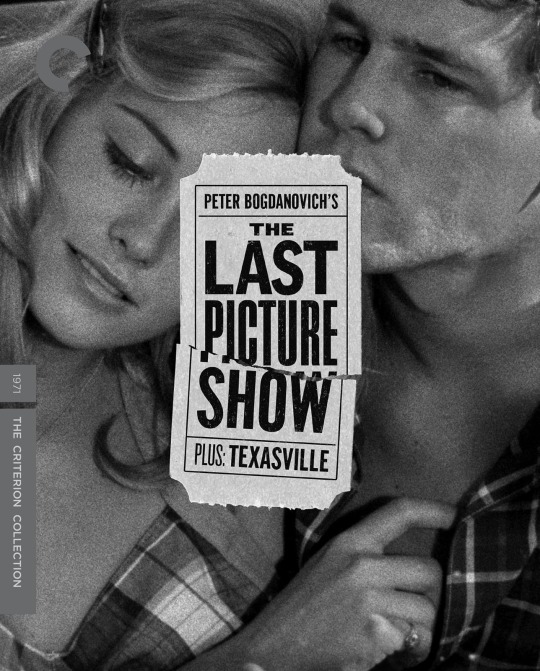
On November 14th, the @criterioncollection is releasing a standalone 4K blu-ray of The Last Picture Show by Peter Bogdanovich!
4K UHD + BLU-RAY SPECIAL EDITION FEATURES
4K digital restoration of the director’s cut, with uncompressed monaural soundtrack
One 4K UHD disc of the film presented in Dolby Vision HDR and two Blu-rays with the film and special features
Texasville (1990), the sequel to The Last Picture Show, presented in both the original theatrical version and a black-and-white version of Peter Bogdanovich’s director’s cut, produced in collaboration with cinematographer Nicholas von Sternberg
Two audio commentaries, featuring Bogdanovich and actors Cybill Shepherd, Randy Quaid, Cloris Leachman, and Frank Marshall
Three documentaries about the making of the film
Q&A with Bogdanovich from 2009
Screen tests and location footage
Introduction to Texasville featuring Bogdanovich, Shepherd, and actor Jeff Bridges
Excerpts from a 1972 television interview with filmmaker François Truffaut about the New Hollywood
Trailers
English subtitles for the deaf and hard of hearing
PLUS: An essay by film critic Graham Fuller and excerpts from an interview with Bogdanovich about Texasville, with a new introduction by Bogdanovich biographer Peter Tonguette
Cover by F. Ron Miller
#Peter Bogdanovich#The Last Picture Show#The Criterion Collection#Texasville#4K blu-ray#4K HDR#Jeff Bridges#Cybill Shepherd
5 notes
·
View notes